
If you want to incorporate a project based learning component to one of your 3rd grade math units this year, but you’re having trouble deciding on a project, you’ve come to the right place! All eight of these math projects are designed with third graders (and their busy teachers) in mind.
Each of the resources listed below makes prepping for project based learning a breeze and makes implementation seamless. These projects are presented in guides that feature detailed visual instructions on each page, making it possible for students to complete their unique projects with maximum independence.
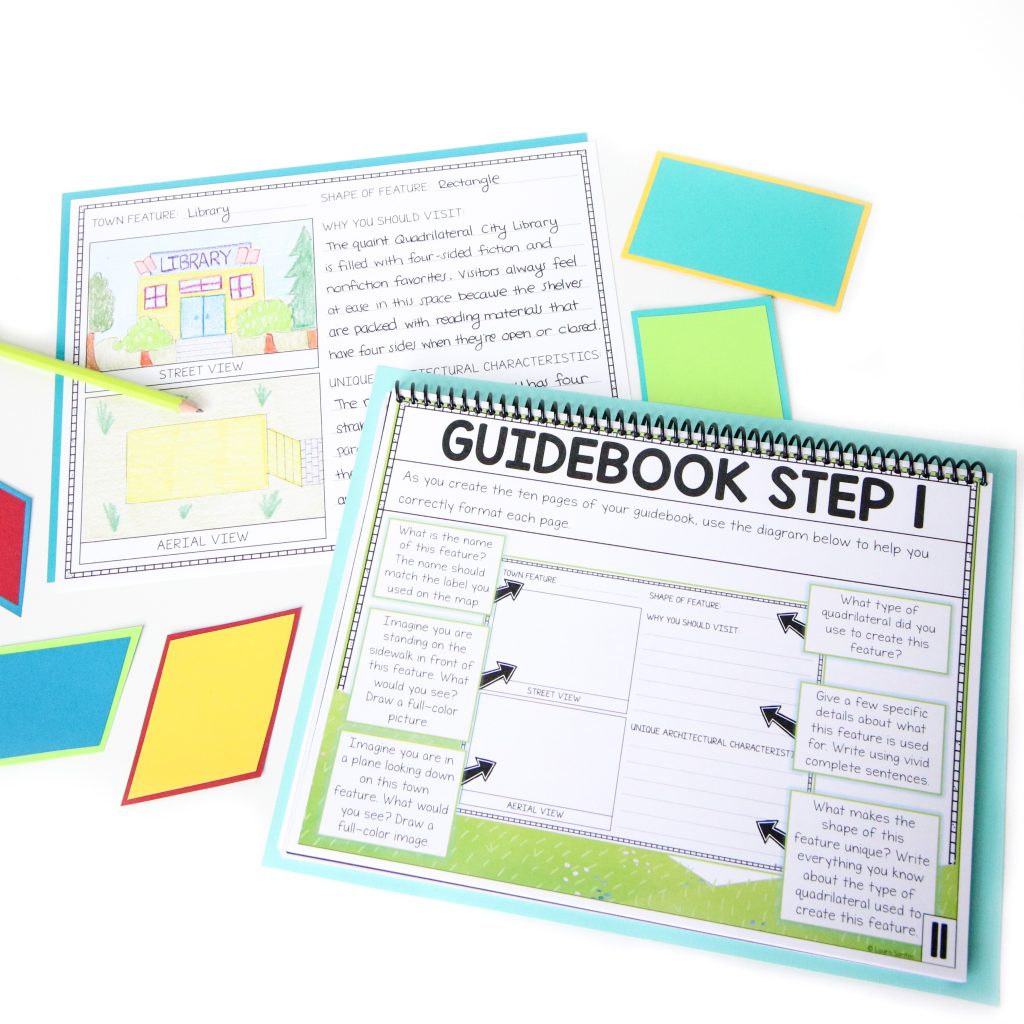
You know what that means…you’ll have the time you need to teach or reteach essential math skills to small groups or provide scaffolding to students who need it most while your students are engaged in meaningful work that helps them dig deeper and apply the skills they’re learning in math!
Click the project that aligns with your next unit and get started with easy and engaging project based learning in your classroom!
During this project based learning unit, your students will be invited to create a new layout for Quadrilateral City’s town square. Quadrilateral City is a place where everything from buildings and roads to houses and parks is built using only quadrilaterals.
The citizens recently passed a bond to fund the renovation of their town square and your students can work to be hired as the lead architect for the redesign project! The most important detail: students must include at least one of each quadrilateral type in the design for the center of their town.
This 3rd grade math project requires the application of each student’s knowledge of the properties of quadrilaterals and goes beyond simple recall and recognition of quadrilaterals.
Throughout the process of the Quadrilateral City simulation, students will have the opportunity to apply their knowledge through creative design as they plan their town square, descriptive writing that incorporates their math knowledge, and communication skills as they present their design at the town hall meeting.
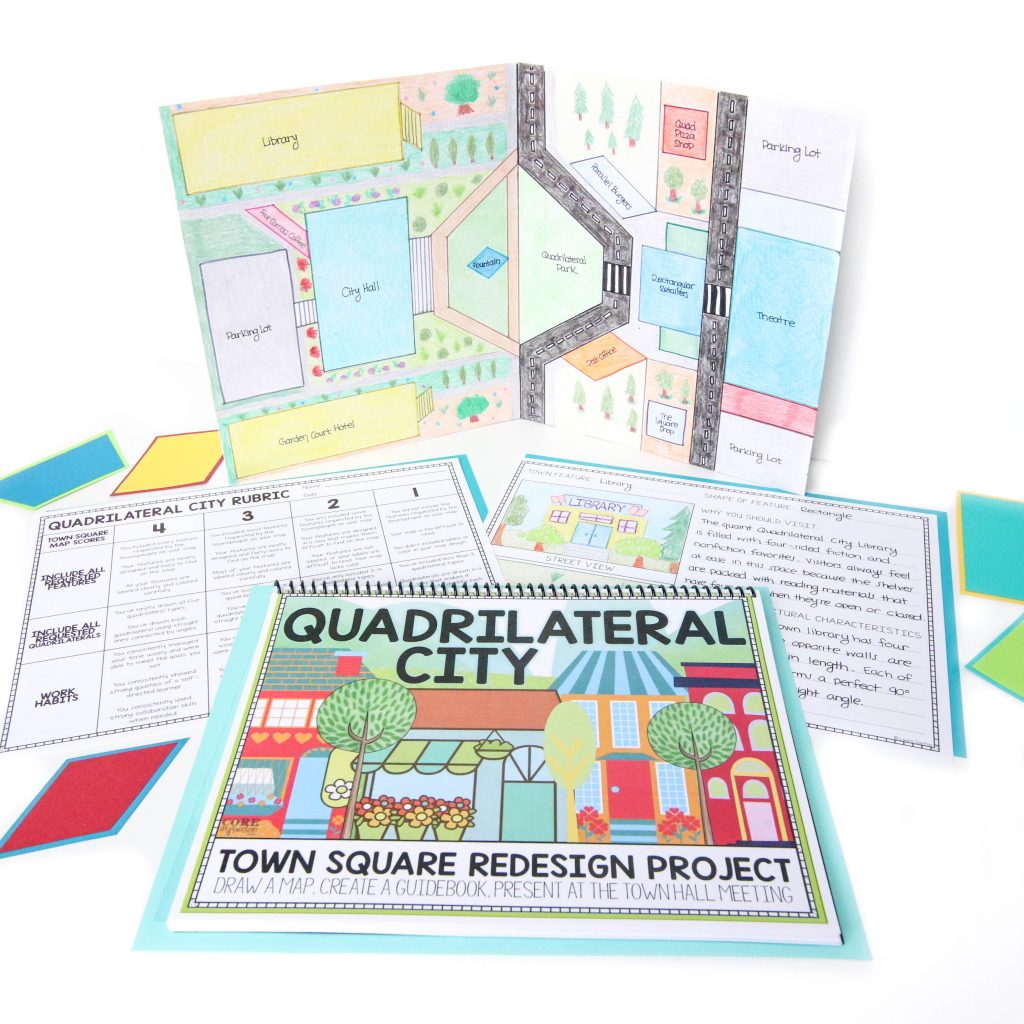
The main focus of this cross-curricular project is on third-grade geometry standards. Throughout the project, students will practice recognizing and drawing quadrilaterals according to their specified attributes, such as a given number of angles or a given number of sides.
In addition to these important math skills, students will also practice their descriptive writing as they feature each quadrilateral-shaped building or space in their Guide to Town Square.
Students will use their persuasive writing skills to convince the townspeople of Quadrilateral City to select their design and use their public speaking skills to present their design at the optional town hall meeting that culminates this 3rd grade math project.
During this project based learning (PBL) unit, your students will work toward becoming an expedition scout for Wildlife Explorers International. As part of their job application process, they must create an expedition field guide filled with information about animals from the habitat of their choice.
This 3rd-grade math project requires the application of students’ knowledge of place value. Throughout the process of the Place Value In The Wild simulation, students apply their knowledge through creative design, engage in informational research that incorporates their math knowledge, and build organization skills as they plan and execute this multi-day project.
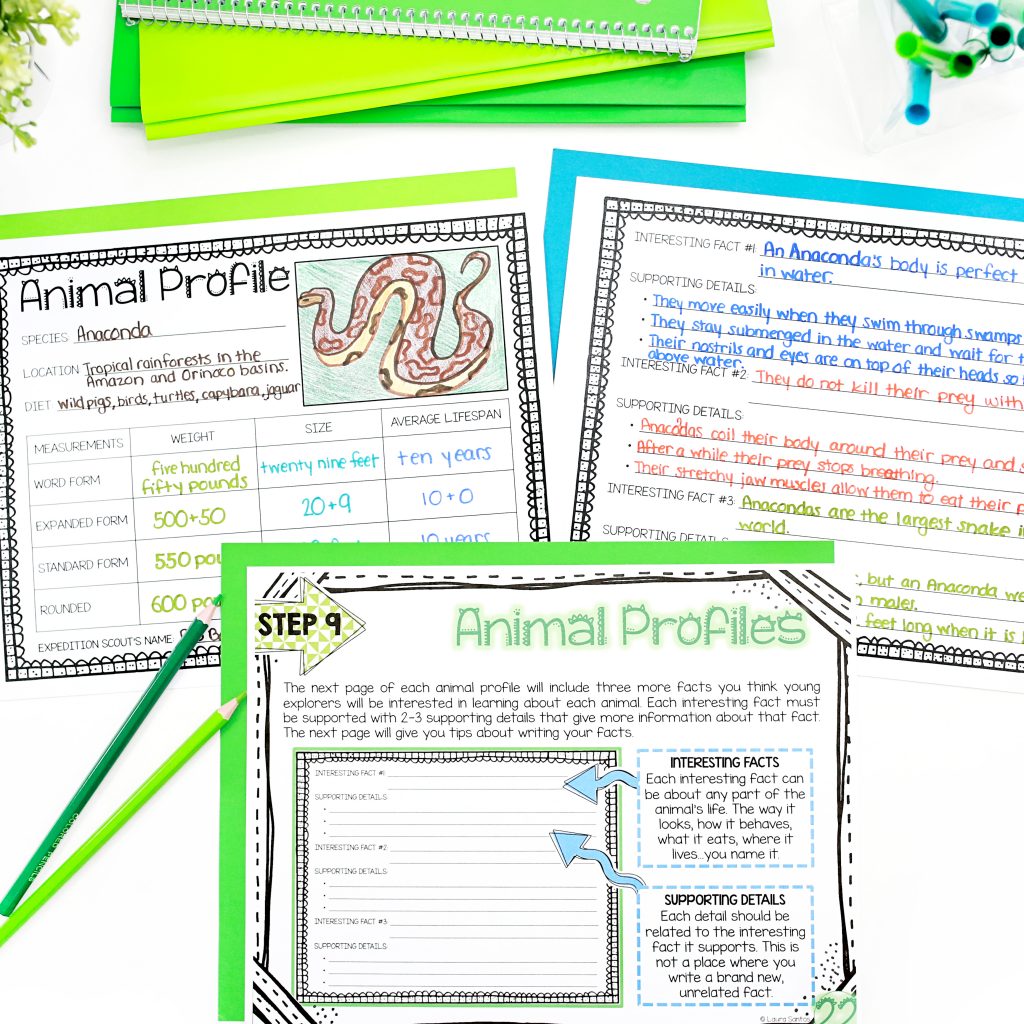
The focus of this math simulation is on second and third-grade place value standards. Throughout the project, students will:
In addition to these important math skills, students will also practice their expository writing & research skills as they report on amazing facts about the eight animals they choose to feature in their Place Value in the Wild Field Guide.
Students will then use their public speaking skills to present their final research either in-person or through a video recording that culminates this project.
During this winter-themed math project, your third-grade students will work toward becoming an Array Architect for Snowflake Valley. The snow people in the valley are getting ready to host their annual Winter Wonderland Festival.
This year, they want to redesign the layout of the festival so all the decorations and attractions are arranged in arrays and equal groups.
As part of their job application process, students must create a Winter Wonderland Festival map that includes a variety of arrays and equal groups, along with a festival directory that features all the equations and problem-solving that corresponds with their unique design.
This 3rd grade math project requires the application of students’ knowledge of equal groups, arrays, multiplication, and division fact families, and properties of multiplication. Throughout the process of the Winter Wonderland Array Architects simulation, students will apply their knowledge through creative design, engage in rigorous problem solving incorporating their math knowledge, and build organization skills as they plan and execute this multi-day project.
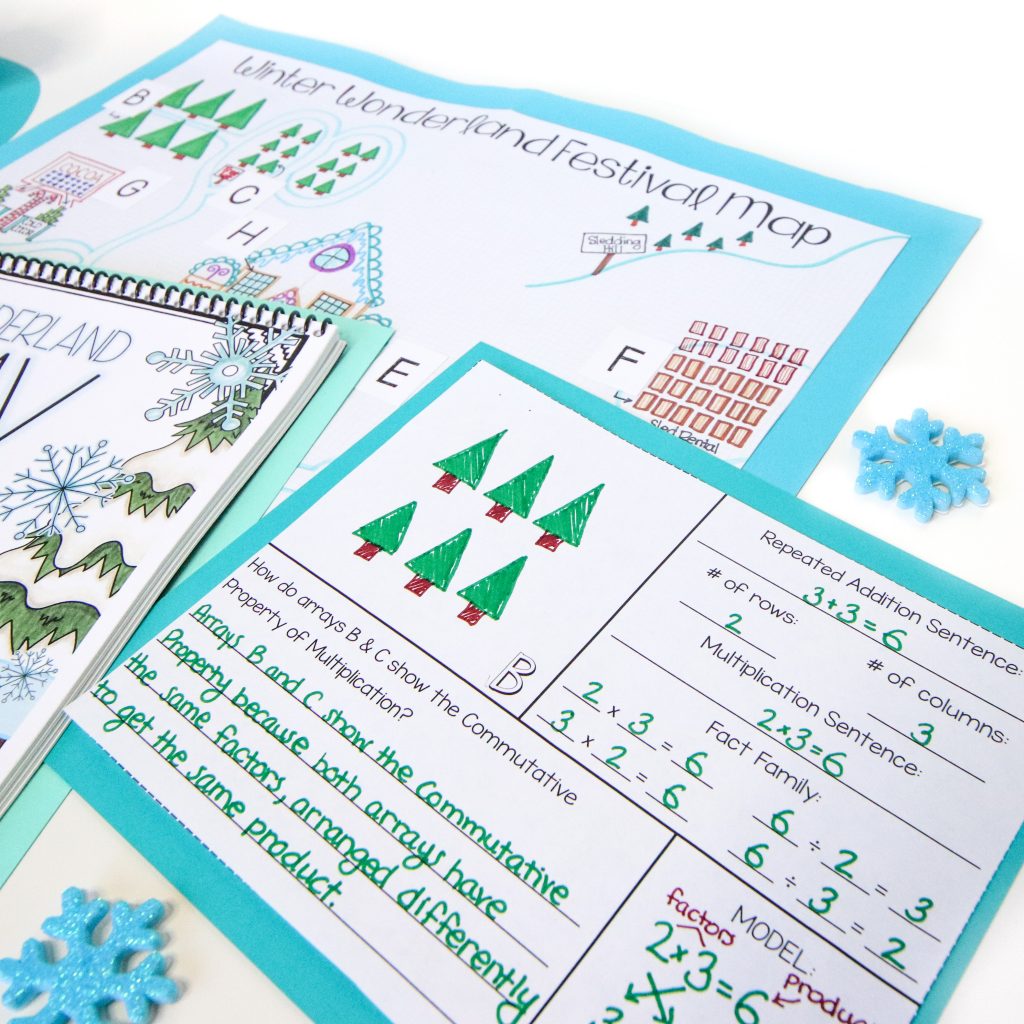
The focus of this math simulation is on third-grade multiplication & division standards. Throughout the project, students will:
During this math project, your students will compete in a contest to be the next star of a new hit show, The Time Of Your Life. Each contestant must brainstorm activities they would love to do if they could have the birthday of their dreams.
Students will take their ten favorite brainstormed activities and create a day-long birthday schedule with no time gaps. They will elaborate on this schedule by creating a narrative storyboard that tells the story of the birthday of their dreams using a narrative introduction, transitions, show-not-tell descriptive details, and a narrative conclusion. The lucky winner will get to star in their very own episode of The Time Of Your Life and take part in every activity planned on his/her birthday schedule!
This 3rd grade math project requires the application of students’ knowledge of telling time and elapsed time. Throughout the process of the Time of Your Life simulation, students will have the opportunity to apply their knowledge through creative design and practice narrative writing that incorporates their math knowledge.
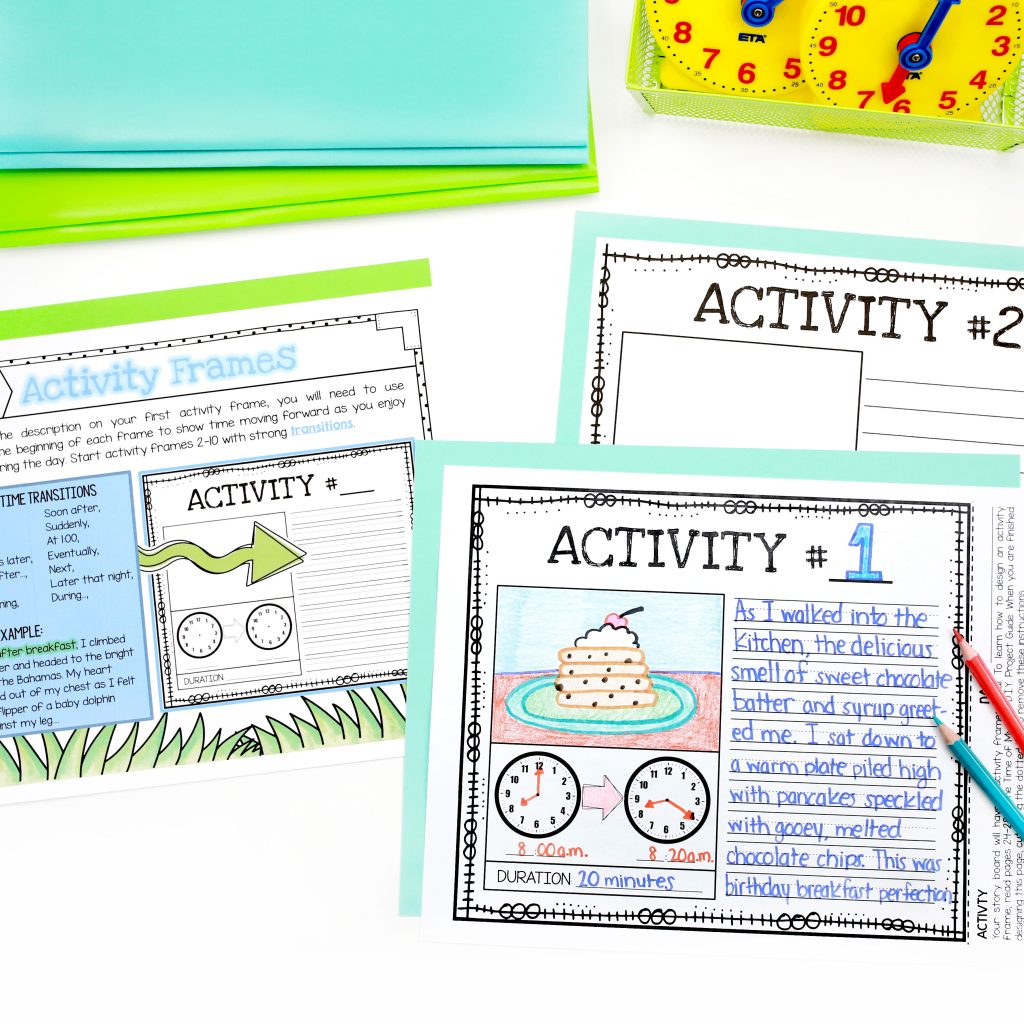
The focus of this math project is on second or third-grade telling time standards. Throughout the project, students will:
In addition to these important math skills, students will also practice their narrative writing as they tell the story of their special birthday plans in narrative format. This is the perfect opportunity for students to practice using narrative transitions that show the passing of time.
During the Measure-Thon math simulation, your students (better known as Mathletes) will compete in four measuring events. They will test their physical strength as they blow, kick, flick, and toss a small puffball through the air. Then they will flex their mental power as they measure the distance their puff ball travels using centimeters, inches, and feet.
Their measurements are used to solve word problems that require them to compare length measurements, calculate the difference between length measurements, calculate the total distance their puff traveled during the entire competition, and make estimations about how far their puff would travel if the rules for the competition were revised in a specific way.
This 3rd grade math project requires the application of students’ knowledge of length measurement using rulers. Throughout the process of the Measure-Thon simulation, students will have the opportunity to apply their knowledge through an interactive math event.
The focus of this math simulation is on second and third-grade measurement standards. Throughout the project, students will:
During this math project, your third-grade students will work toward becoming an Array Architect for Camp Array. This campground has been closed since 1975, but the owners are ready to reopen the gates to their beautiful mountain campground.
Before they open, the owners want to redesign the campground so it has a fresh look and feel, and they’re looking for a special architect to get the job done. The most important detail: they want everything on the campground to be arranged in arrays and in equal groups!
As part of their job application process, students must create a campground map that includes a variety of arrays and equal groups, along with a campground directory that features all the equations and problem solving that corresponds with their unique design.
This 3rd grade math project requires the application of students’ knowledge of equal groups, arrays, multiplication, and division fact families, and properties of multiplication. Throughout the process of the Camp Array simulation, students will apply their knowledge through creative design, engage in rigorous problem-solving incorporating their math knowledge, and build organization skills as they plan and execute this multi-day project.
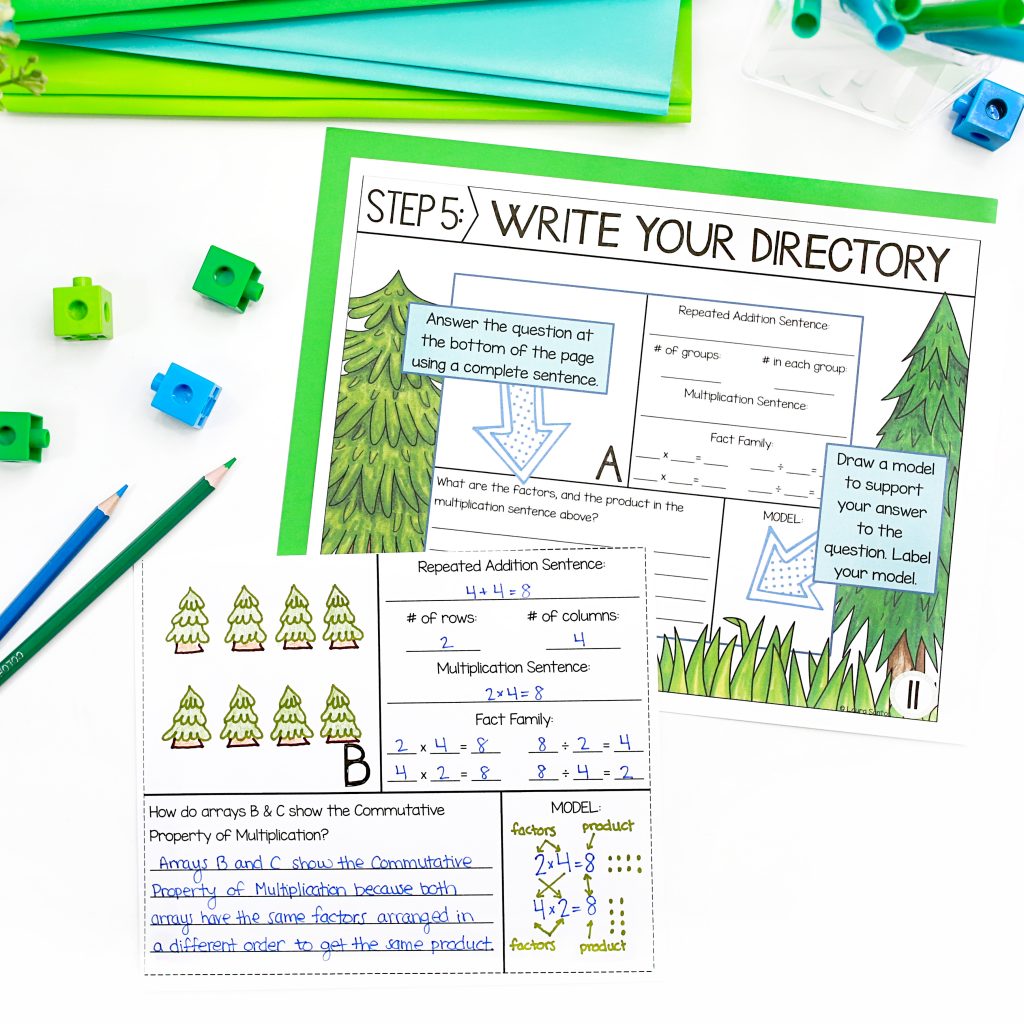
The focus of this math simulation is on third grade multiplication & division standards. Throughout the project, students will:
This simulation introduces your students to four methods for displaying data: frequency tables, bar graphs, pictographs, and line plots. Students will record observations about each method for displaying data and compare/contrast methods for collecting data.
They will use this knowledge to solve a problem for Val’s Heart Factory. The factory is having some trouble with its production line…the number of hearts being added to each of their boxes/bags of hearts is unequal. Your students will work through a series of increasingly challenging data-focused steps to help the factory solve their problem.
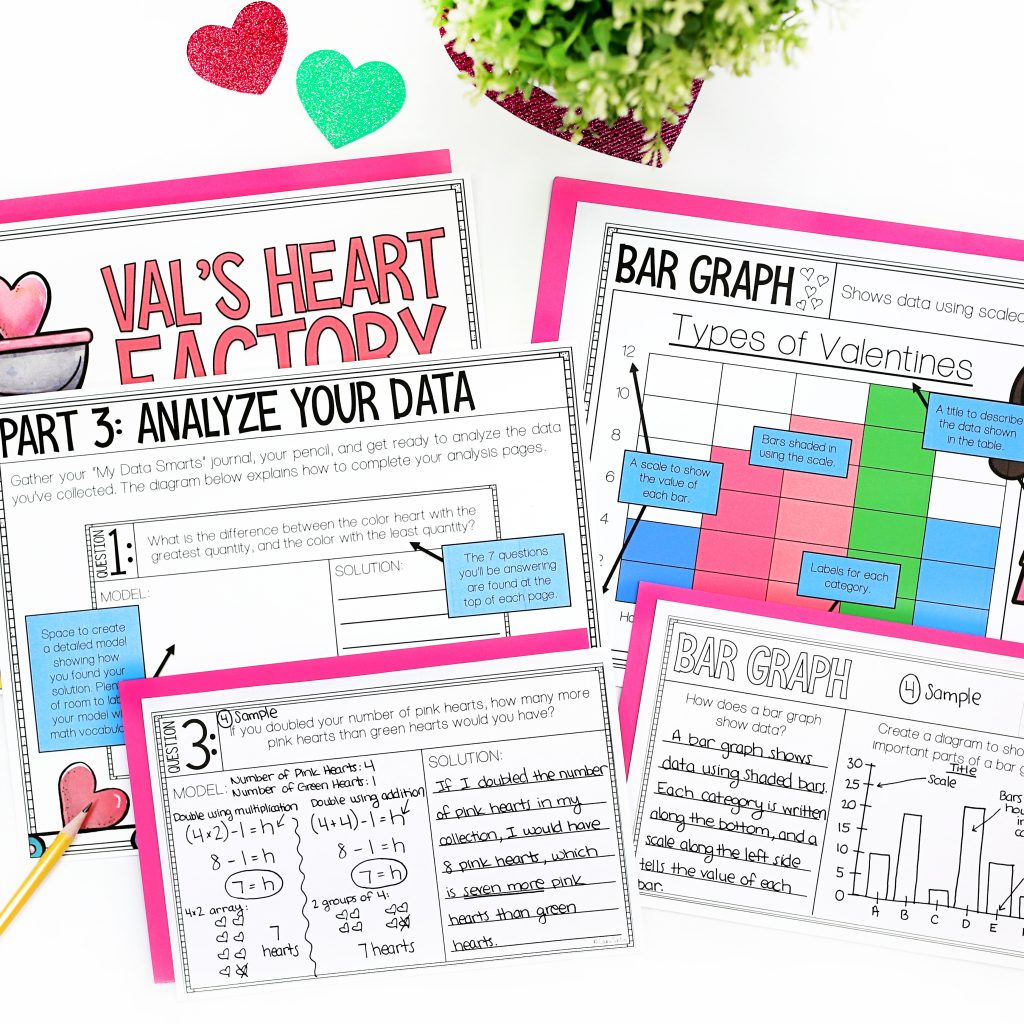
The focus of this 3rd grade math project is on data and graphing standards. During the project, students will draw a scaled picture graph, a scaled bar graph, and a pictograph, and create a frequency table to represent a data set with several categories.
Students solve one-step and two-step “how many more” and “how many less” data problems using information presented in the graphs they create. In addition, students will solve put-together, take-apart, and compare problems using information presented in their graphs.
During this project based learning unit, your students will “grow” a flower using fractions as their guide. Their flower is entered in a contest and judges provide them with feedback on their gardening skills using a scoring rubric.
Throughout this 3rd grade math project , students will use two important skills:
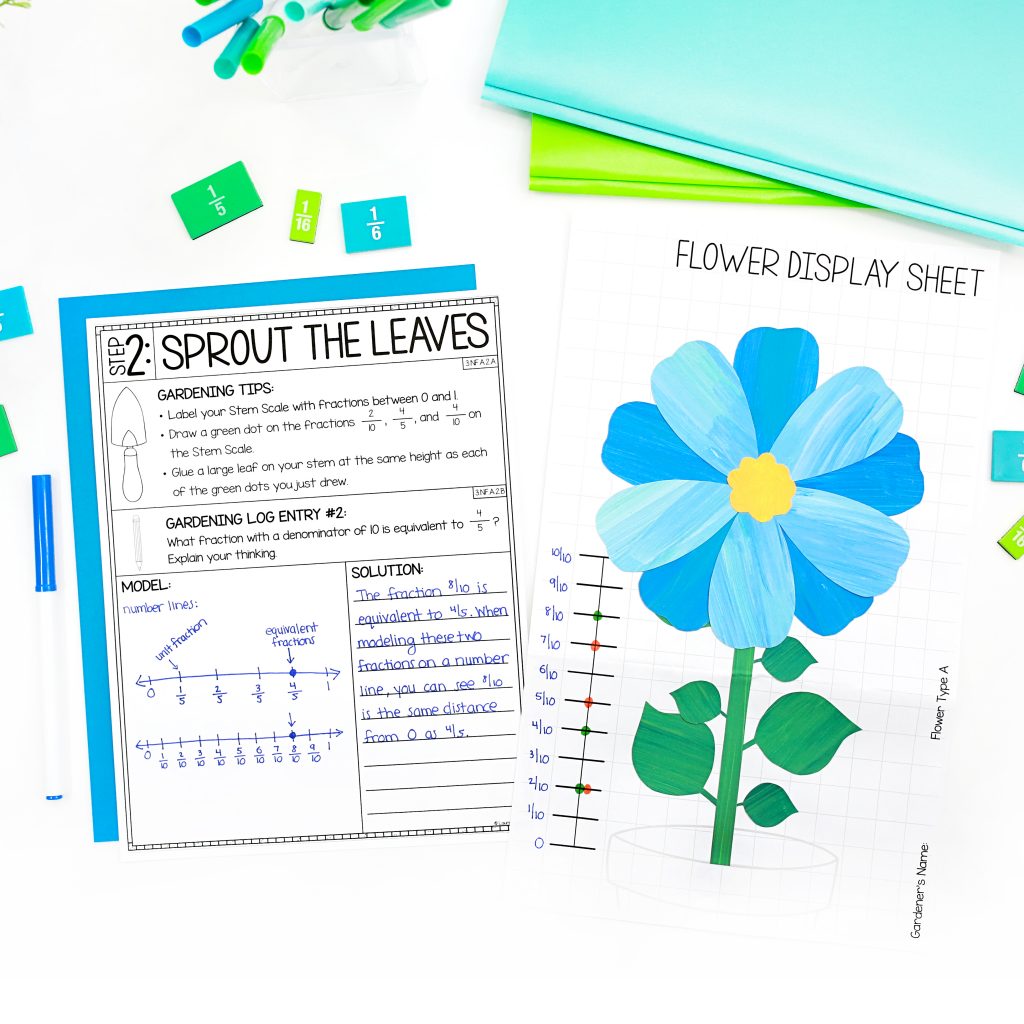
The main focus of this math simulation is on third grade fraction standards. Throughout the project, students will:
Your third graders are going to love the opportunity to apply their learning in creative ways using these math projects. I’d love to hear from you if you plan on using any of the projects described above. If you’re looking for a specific project you don’t see listed here, let me know in the comments below.

I’ve been an elementary teacher for ten years, and love sharing tips and resources that make differentiated learning more manageable for you. Thank you for visiting.
Learn More
Dropping by with weekly tips, classroom strategies, and free content created with you in mind.
Join me and other 2nd through 4th grade educators in the Teaching with Core Inspiration Facebook Group. This is a place to collaborate, ask questions, and learn how teachers like you are using Core Inspiration resources in their classrooms. Hope to see you there!
© 2024 Core Inspiration ∙ Website by KristenDoyle.co
2 Responses
I am in need a combined 3rd and 4th grade 9 day Math Camp basically. These are fun. but may be elementary for 4th graders…
Hi April, I do think a few of these would be a bit elementary for 4th graders as they are mostly aligned with 3rd grade math standards.